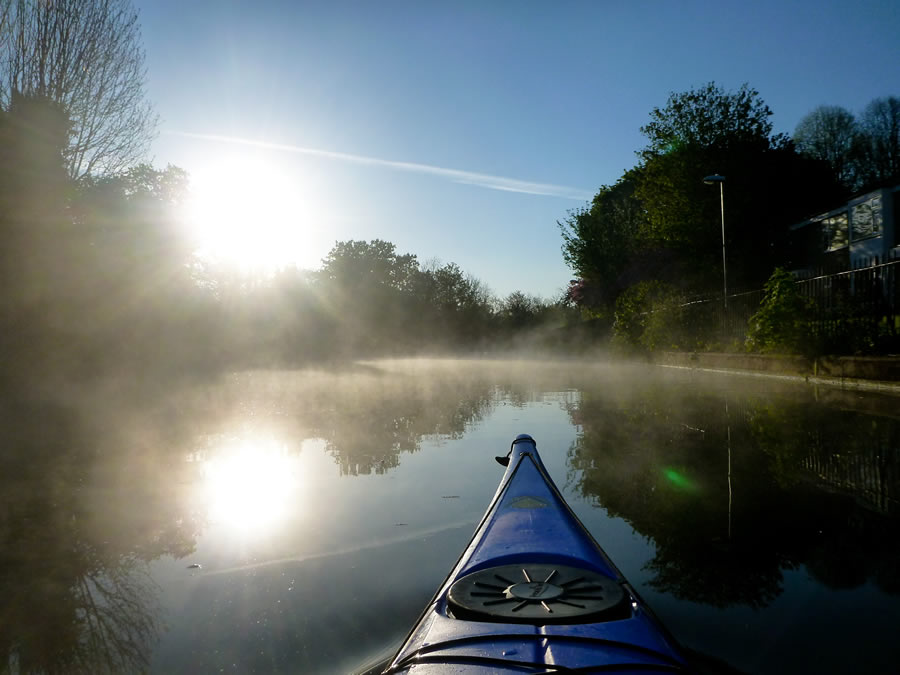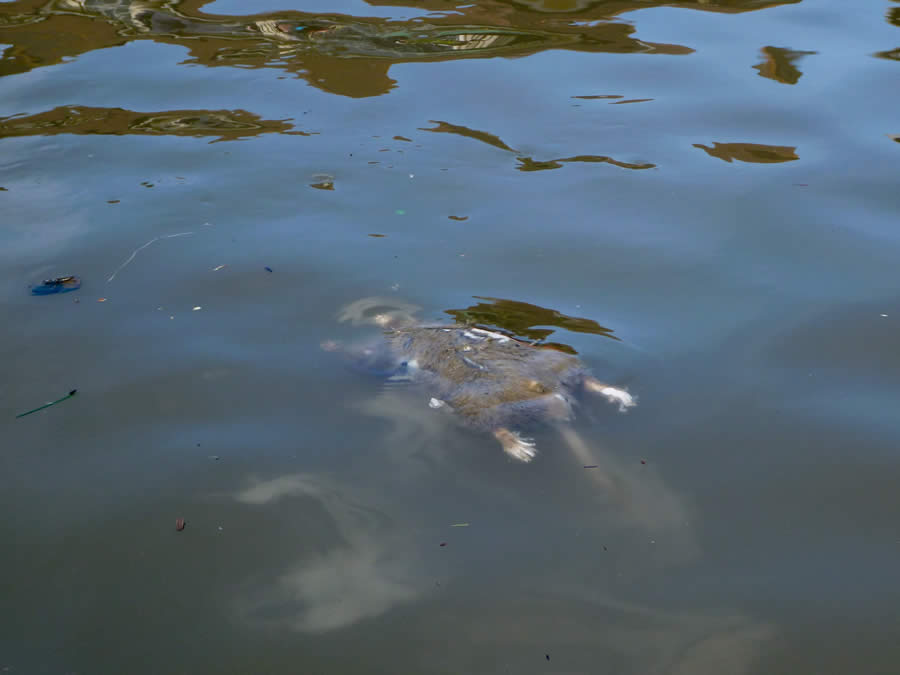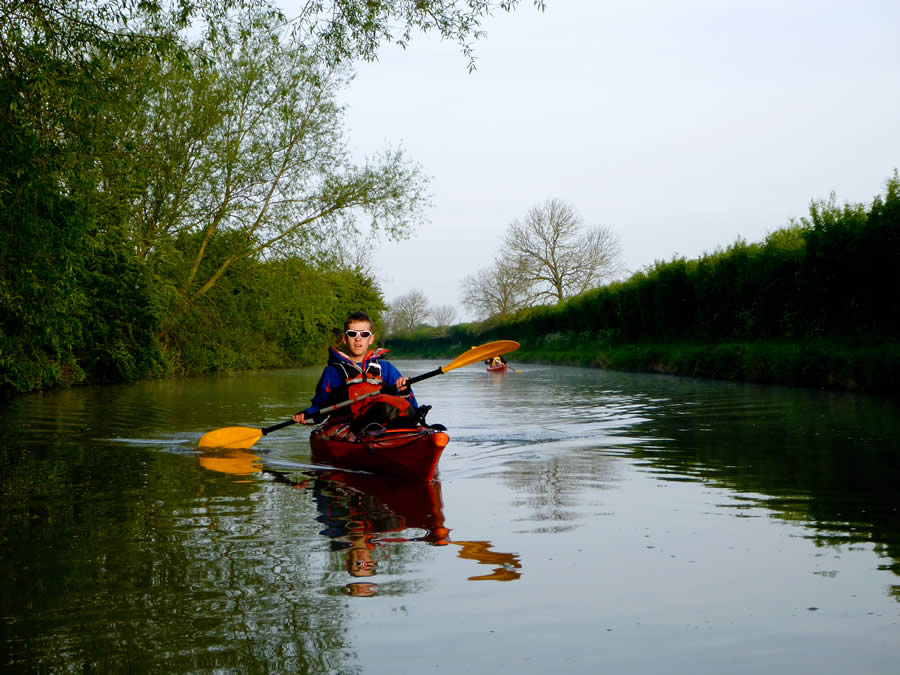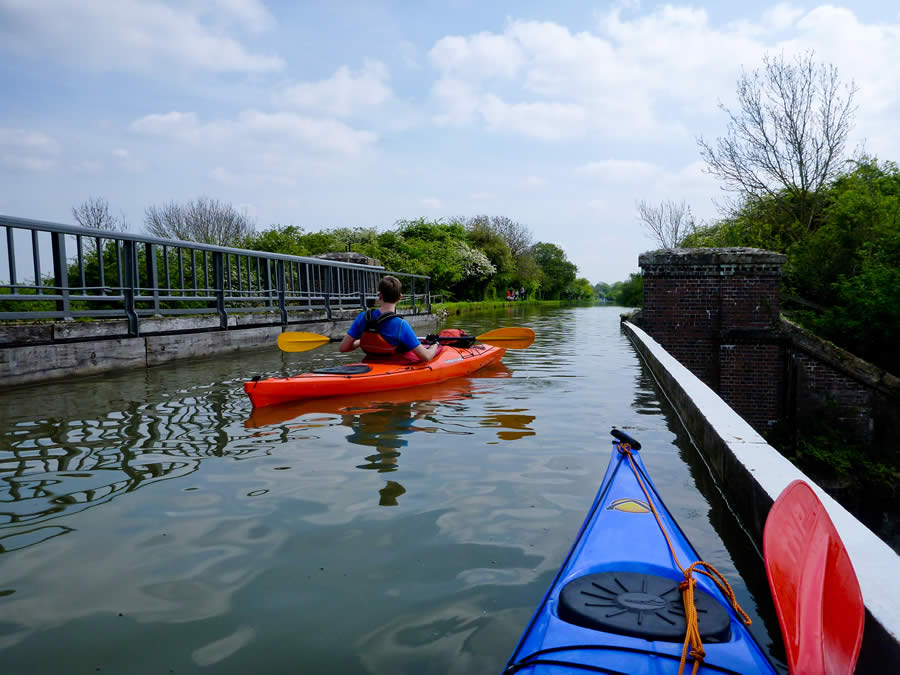Kayaking the Grand Union Canal
Dylan first proposed the concept. His vision was romantically encapsulated in a simple statement: a weekend paddling the length of the Grand Union Canal from Birmingham to London.
I’d seen Dylan in charge of a vessel once before, battling strong cross-winds on a Swedish lake. We were rowing a kilometre wide crossing of an Arctic fjord during the month long Kungsleden hike. His technique wasn’t awful, another friend missed the opposite jetty by almost two kilometres downstream, but he wasn’t the sort of character I’d have given first thought to when planning a nautical adventure. In the end, he never even came.
“Steve declared that he was “mad for it” without a moment’s thought, only asking some weeks later what exactly he had enlisted for.”


As with the plans for many adventures, the passage of time evolved the details but did little to lose the original spirit of the endeavour. Two days became three, Birmingham moved a little south to Leamington and the inflatable dingy became long, keeled plastic kayaks. Dylan couldn’t find the time to come so new companions were needed. Clay was first: cool, level-headed, a solid climbing partner who at 14 had spent two days on DofE in a kayak on the River Wye. He hadn’t paddled since. And then there was Steve Gibbs (who for some reason is never referred to without his surname). Steve typically spent his holiday time trekking in Afghanistan, Sudan or much of the Middle East but declared that he was “mad for it” without a moment’s thought, only asking some weeks later what exactly he had enlisted for.
Of all the UK’s networks of infrastructure, the canal system was the one I knew least about. Weaving its way through the flattest routes of the land these ancient waterways were once a key component of the country’s goods network. After a period of time spent sliding into disrepair they are now being gradually restored so that retired couples and drunk holidaymakers can experience the thrills of steering a long thin boat from the rear end. We also found them home to many a helpful and hospitable family whose calm and welcoming demeanour was a beautiful reflection of their way of life.
There was only one account online of an attempt to paddle the Grand Union Canal and the individual in question trained well before failing after a five day push. Undeterred, we hired some boats, borrowed some kit, bought some Lucozade and packed for the adventure.
“There was only one account online of an attempt to paddle the Grand Union Canal and the individual in question trained well before failing after a five day push.”



Clay, Steve and I climbed into our boats at 6am on Saturday morning and set off out of Leamington Spa. The early morning sun was dazzling atmospheric and great waves of misty steam rose up into the sky above. The stagnant, rancid waters of the canal had never looked so nice.
We paddled on out of town passing under the first of many hundreds of bridges. With few junctions and signposts to mark the passage of distance these numbered waypoints were our only measure of progress, counting up or down to an unknown conclusion. It was amusingly infuriating to count down towards zero, only to have the clock reset by the arrival of a junction in the canals. After around ten kilometres we passed Long Itchington and sat at the foot of Stockton Locks. Everyone we passed reminded us how they had never before seen a kayaker on the canals and we were rapidly learning why. If we wished to reach London within three days we could ill afford to spend time floating through locks but were instead forced to portage each one. And they were unrelenting. With only a few miles of paddling gone we had already reached lock 13, half an hour later we were begrudgingly dragging our boats around lock 21.
By lunchtime we had reached a key canal landmark: Braunston (we’d never heard of it). Our arrival was announced by a floating dead terrapin and the chance to sneak a wee in The Boathouse pub. Another 9 locks later and the first tunnel loomed long, dark and very intimidatingly ahead. Whilst frustrated by locks and fearful of swans, I think it was only the tunnels which I had been truly afraid of before we started. They are forbidden to all none motorised traffic and for good reason: pitch black throughout and just shy of two miles in length they are no place to meet an oncoming narrowboat. We were therefore most grateful for the offer of a lift from a kind couple aboard their hundred year old narrowboat. Obstacle negotiated, we bid farewell and after another seven locks darkness was falling so we made camp in the corner of a field and slept well.
“Everyone we passed reminded us how they had never before seen a kayaker on the canals and we were rapidly learning why.”






The beauty of navigation on canals is that you don’t need to do any. Consequently we were somewhat surprised to find our second tunnel at Bugbrooke only a few kilometres away from our camp. It was still early so this time we went for it, paddling furiously into the darkness praying we were alone inside. Occasionally we would pass a great shaft of water pouring from the ceiling and I strained my ears for the ominous chugg-chugg-chugg of an approaching engine. We emerged unscathed, breathed a big sigh and passed our next canal boat only a few minutes later.
Through the second day we covered another fifty kilometres, portaged 15 locks and crossed the iron viaduct at Wolverton Aqueduct. More amusingly, Steve had decided that to circumvent his elbow injury he would paddle with one arm upside down for the rest of the trip. It looked utterly bizarre and was topped only by his insistence that he had invented a new stroke and we should all copy. As night fell we floated through Leighton Buzzard, silent and hidden amongst the darkness of the water. The bright lights faded from view and we climbed out at The Grove Lock to bivy in the grass.
“It was still early so this time we went for it, paddling furiously into the darkness praying we were alone inside.”







Come on Steve! We shouted back, pushing off into the water. Steve followed: paddles in hands, toothbrush in mouth. The end was only fifty kilometres as the crow flies but we were short on time. My enthusiasm for finishing the route had swung through a dramatic bell-curve from the initial rampant optimism, through the despondent slow crawl of day two to a final burst of energy for a grand finale. The next seven miles required 17 portages including seven back-to-back at Marsworth. Sensing an impending early finish I called Admiral Insurance and added my housemate waiting back home as a driver to my car. Our new target was to be the spiritual edge of London, the M25.
Tring Station, Cow Roast, Dudswell then Northchurch. It was hard to tell if we were spending longer walking or paddling through these towns. The canal was descending fast and our final fifteen kilometre push involved 26 locks. We heard the M25 long before we saw it and I was proud to sit beneath its giant concrete beams and reflect on our weekend’s achievements. We had been hopelessly optimistic but after 96 locks, two long tunnels and 135km of paddling, our urban adventure was over. It had been brilliant.
George Cave, Clay Conlon and Steve Gibbs…in the mix!
Many thanks to Matt Blackmore for coming to collect us, and Leam Boat Centre for a good deal on the boat hire.
“My enthusiasm for finishing the route had swung through a dramatic bell-curve from the initial rampant optimism, through the despondent slow crawl of day two to a final burst of energy for a grand finale.”

Map of the Route
The map below shows the route taken with locks, tunnels and bivy spots marked. If you wish to download a Google Earth (KML) file of this information including all of the various branches and junctions of the Grand Union Canal then you can do so below. The original paths of the canal were plotted from data provided by http://www.waterwayroutes.co.uk/wr/.